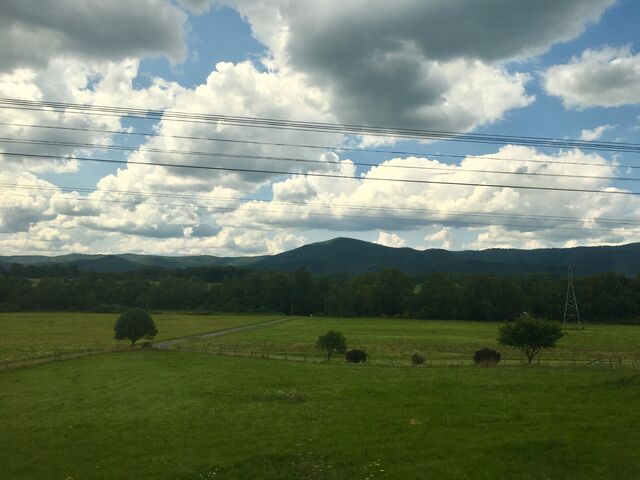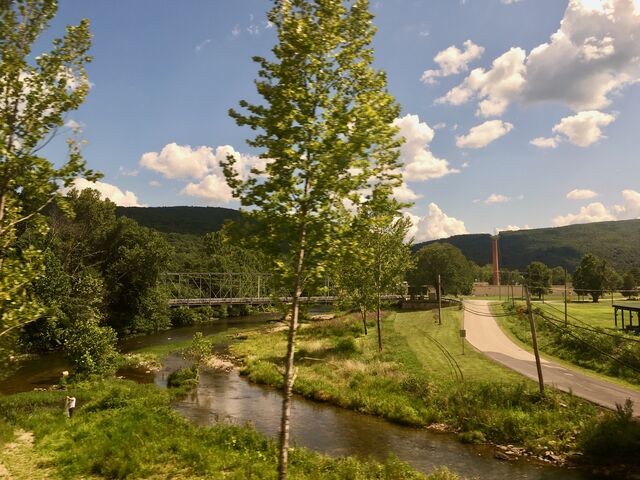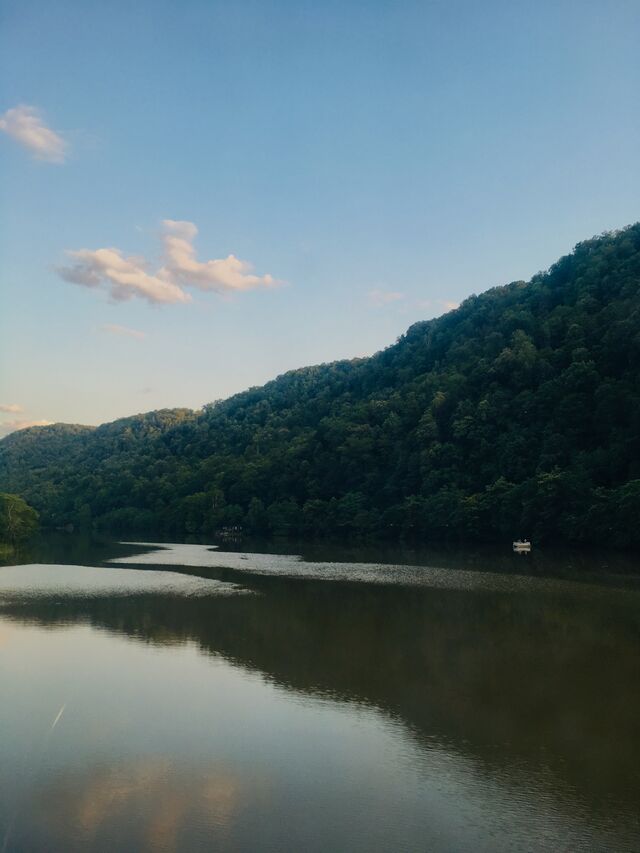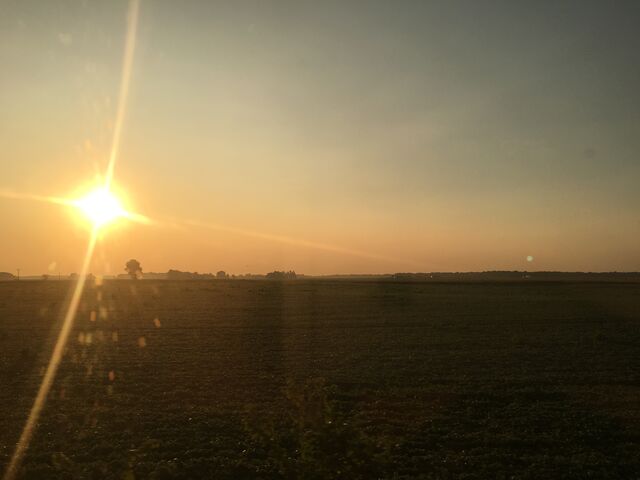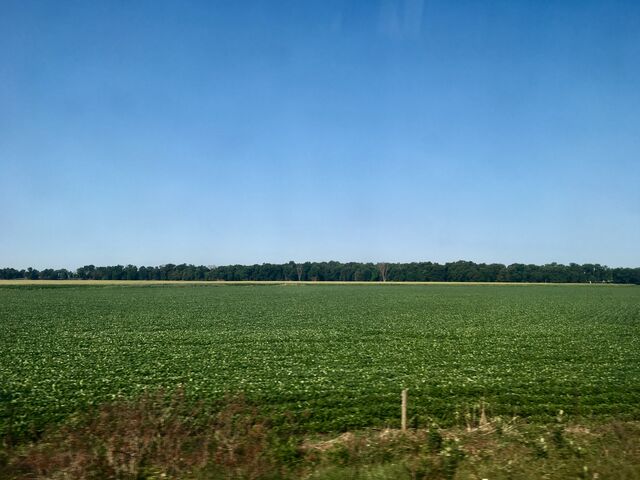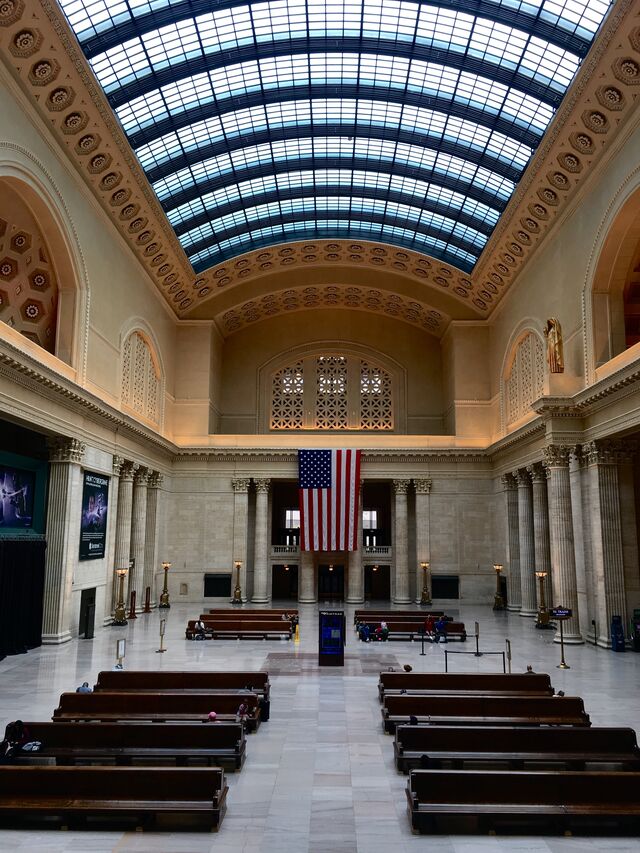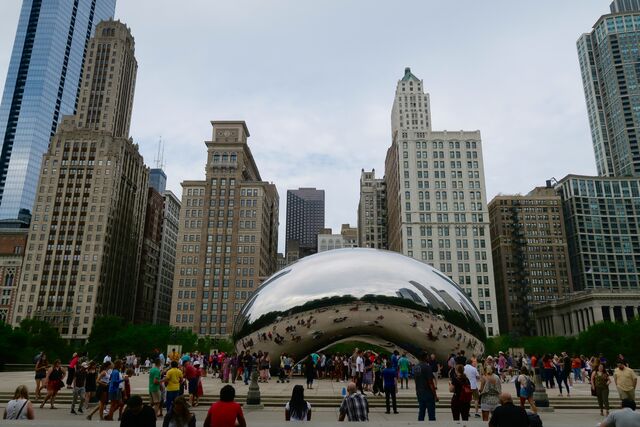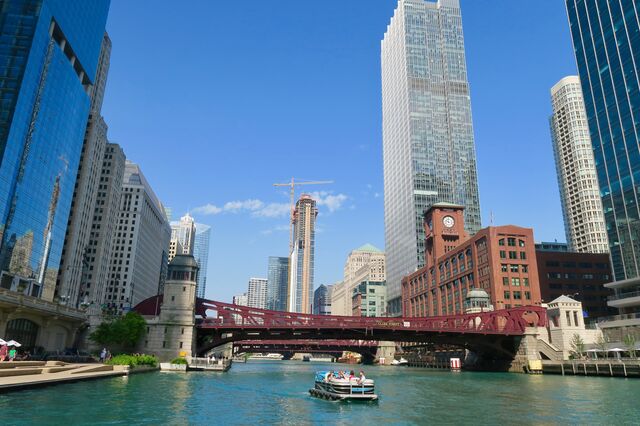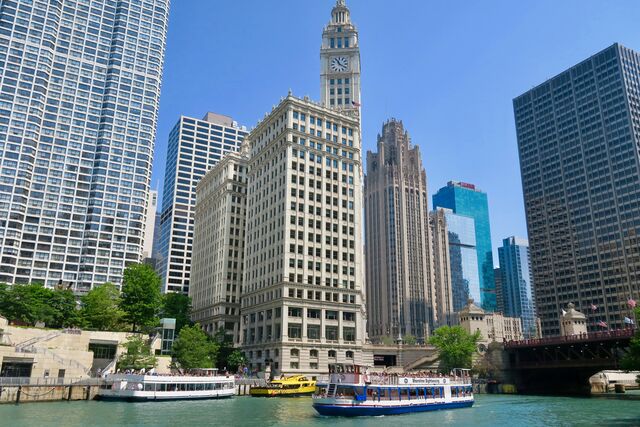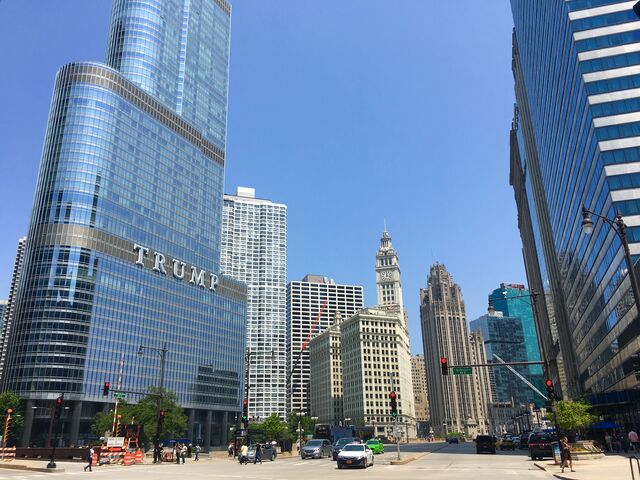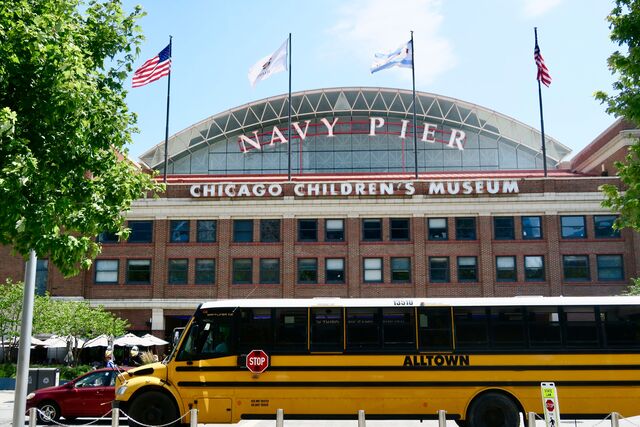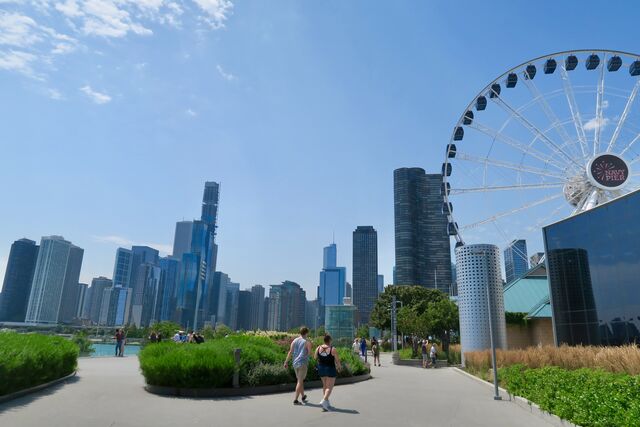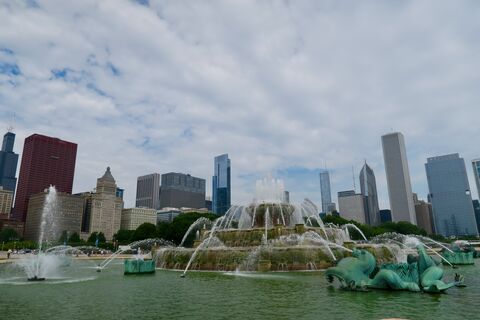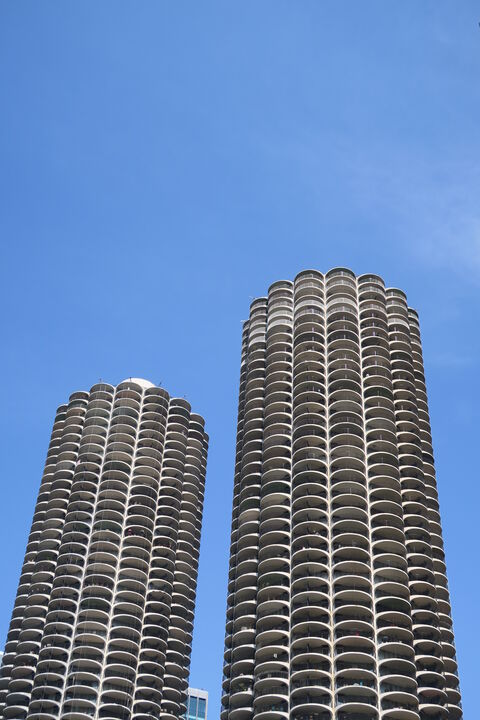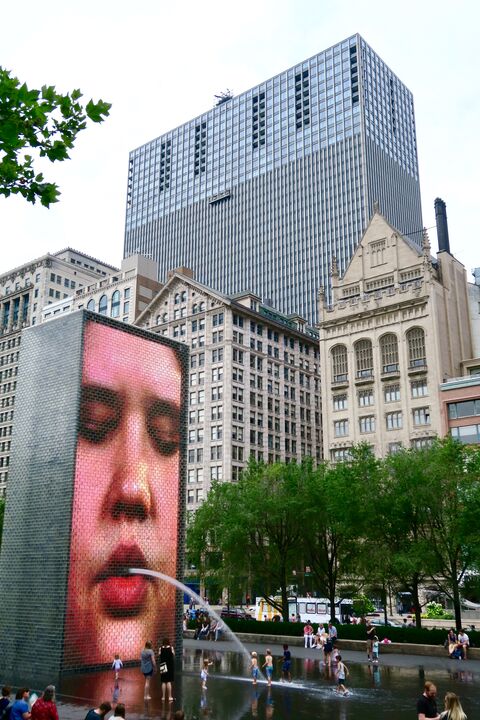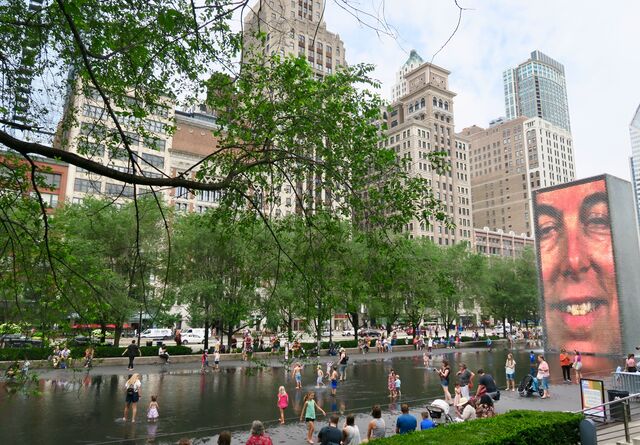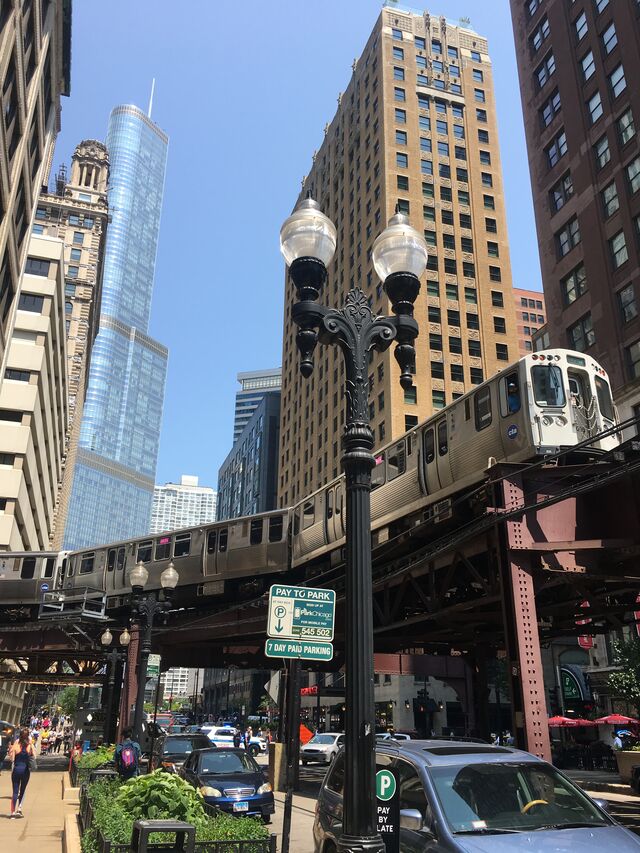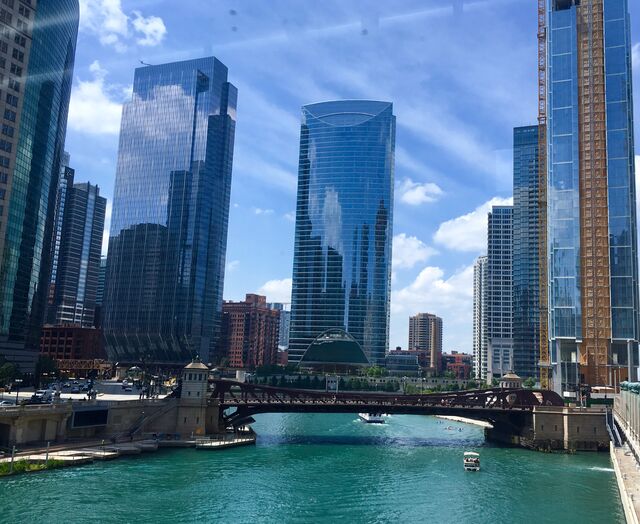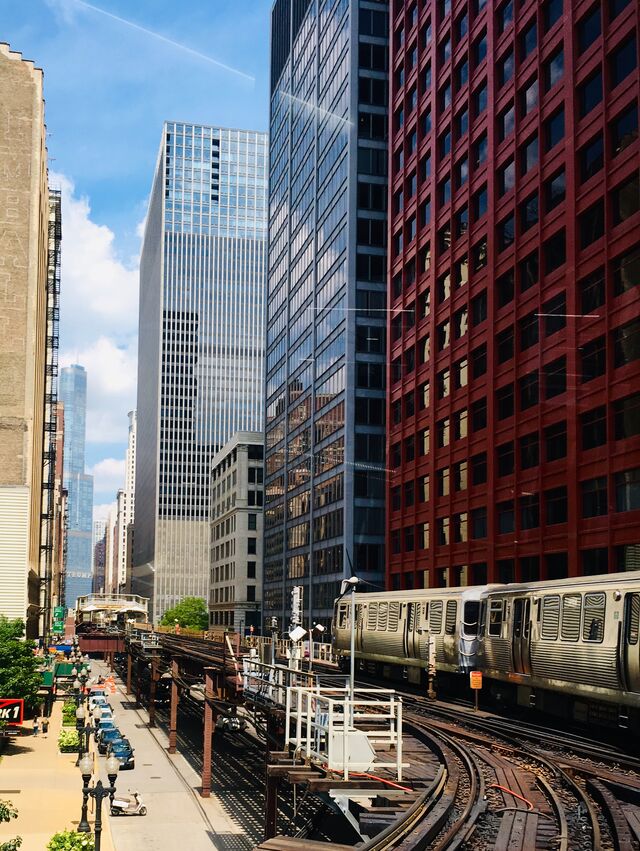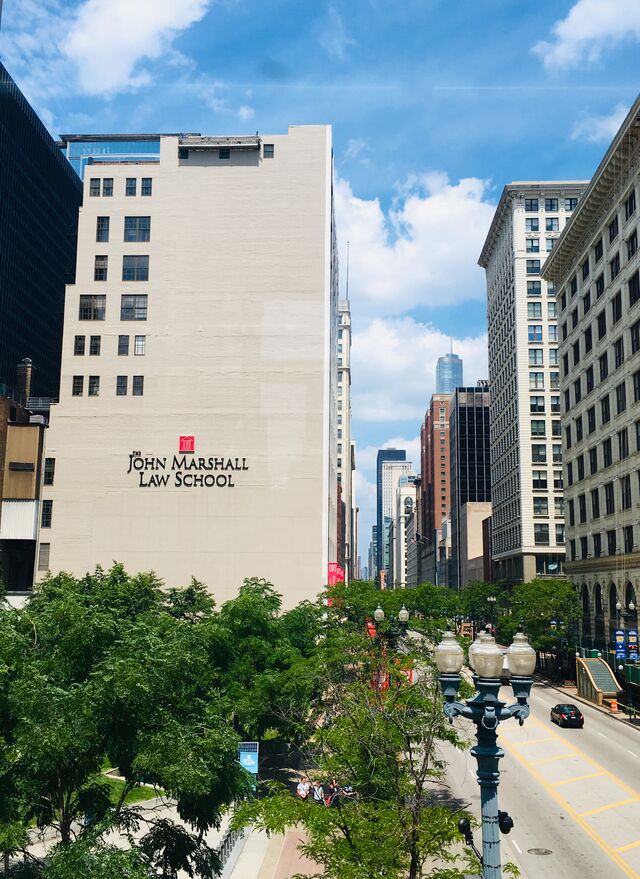Washington D.C. to Chicago
There were two Amtrak routes between Washington D.C. and Chicago: The Capitol Limited which runs daily through Pittsburgh, Pennsylvania and Cleveland, Ohio, and the Cardinal which runs triweekly and takes the less direct route through Charlottesville, Virginia, Cincinnati, Ohio, and Indianapolis, Indiana. The Capitol Limited has a journey time of 17 hours and 40 minutes between Washington D.C. and Chicago, compared to the Cardinal’s 24 hour journey. Naturally, I chose the longer route. Before those readers who were hoping to hear about the Capitol Limited despair, you will be pleased to know that this blog will soon feature a guest post by a friend of mine who I studied with at Oxford. She was travelling in the USA at the same time as me, and as part of her travels, she rode the Capitol Limited from Pittsburgh, Pennsylvania, to Washington D.C.
In addition to the longer journey time, I had also read that the Cardinal was much more scenic than the Capitol Limited. I thus had high expectations for this train. Whilst the scenery from the Cardinal was certainly interesting, I have since taken other significantly more scenic routes, and the Cardinal by no means stands out as particularly memorable. Nevertheless, it was interesting to watch as the train passed through the Allegheny Mountains and Shenandoah Valley in West Virginia, the Ohio River Valley, and the cornfields of Indiana. Travelling through West Virginia, the train climbed high, with the tops of the trees barely reaching the tracks. Many large Victorian homes could be seen perched on hills. As we passed through White Sulphur Springs, my guide book told me to keep a look out for a secret bunker somewhere in the surrounding hillside which had been built for Congress to use in the event of a nuclear attack. I observed waterfalls and wooded mountains on both sides of the track, but no secret bunker unfortunately. Other West Virginia highlights included the women’s federal prison in Alderson, and the Great Bend Tunnel. The former has housed a number of notable inmates, including Martha Stewart. The latter is notable for the contributions of John Henry, one of the Virginian slaves who helped construct the tunnel during the 1870s. During construction, Henry challenged the newly invented steam powered drill to a contest. Swinging hammers in both of his hands, Henry managed to win the competition, before dying of a heart attack from the stress shortly after. The song ‘If I had a hammer’ was apparently inspired by Henry’s feat.
There were a large number of Amish people on board this route, with the train passing through Ohio and Indiana, two states with large Amish populations. Apparently many Amish do not travel by airplane, with flying viewed as an unnecessary symbol of luxury. Thus, train is the preferred option for long-distance travel.
I was sat next to a middle-aged man who was also travelling to Chicago. He did not speak, with one exception. This was when one of the train attendants ran into our carriage, visibly stressed, and yelled out to attract the attention of another attendant. It soon became clear that a woman and her two small children had accidentally boarded the west-bound Cardinal instead of the east-bound Cardinal. “This train only comes three times a week, they will stuck in the middle of nowhere for days”, my seat companion excitedly proclaimed. Fortunately, the error was revealed mere moments before the east-bound and west-bound trains passed each other, meaning the family was able to transfer across to the correct train.
The Cardinal (as with the East Coast trains) had wifi on board, allowing me to catch up with my Oxford friends via four-way or five-way video conversations.
Chicago
The Cardinal arrived at Chicago’s Union Station which marks the centre of the USA’s rail network. Indeed, 4/6 of the long-distance routes I will be travelling either start or end in Chicago: the Cardinal; the Southwest Chief; the Empire Builder; and the California Zephyr.
I spent four days in Chicago. I found it was an exciting city with beautiful modern architecture. I enjoyed walking along the Chicago river, and visiting Millennium Park with its famous ‘bean’ sculpture.
I also visited Navy Pier, an area of the city with gardens, rides, parks, and a multitude of shops and restaurants.
Other attractions included Buckingham Fountain (which allegorically represents Lake Michigan), the Marina Towers (which appeared on the cover of Wilco’s excellent album Yankee Hotel Foxtrot, and the sculpture at Crown Fountain displays the faces of 960 Chicago residents for 5 minutes at a time.
My favourite thing in the city, however, was riding the “L” train (short for “elevated”) which travels along a loop above the city, proving magnificent views of the Chicago river and city buildings. It was so enjoyable, in fact, that as soon as I finished the loop, I walked around to the other side of the platform and re-boarded again immediately.
